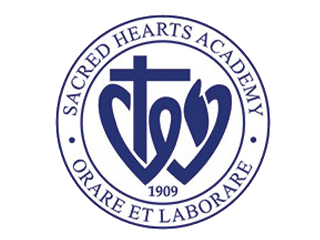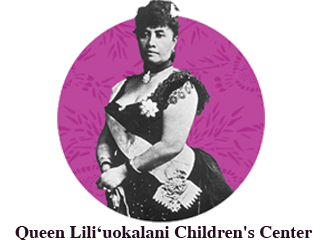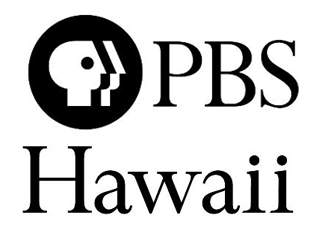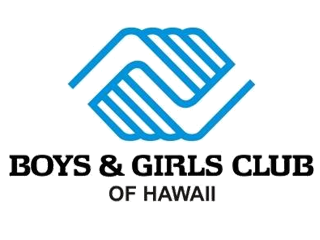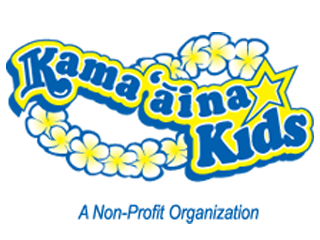A head fake is when you look like you’re going one way but you’re actually going another. A Basketball player does this when she fakes one way and then zooms the other, leaving the off-balance defender grasping at air. So too, I’ve learned over the years, a lot of the very best teaching proceeds through head fakes. The students think that they’re learning one thing. But they’re really learning something more.
Brother Noland is Hawaiian Inside Tracking’s founder and lead teacher. Given the fact that, in addition to being a master outdoorsman and an accomplished musician, he is a skilled and wily basketball player, it shouldn’t come as a big surprise that Hawaiian Inside Tracking makes use of a head fake or two.
If you came on one of our Hawaiian Inside Tracking field trips, you would see a bunch of happy (and probably rather muddy) kids practicing a variety of outdoor survival skills. One minute they’re running down a bamboo lined hill to work on their balance. The next minute they’re learning how to catch fish with a throw net, hit a target with a bow and arrow, tie strong knots, read animal tracks, or even make a fire using the old-time ways. Then they’re standing as still as trees or silently stalking an imagined prey.
You see the students practicing these useful skills. But look a little deeper. Through the process of this practice the students are also learning even deeper lessons. This is the head fake. In Hawaiian Inside Tracking there are invisible lessons beneath the visible lessons. The students think that they’re learning one thing (like archery). And they are. But they’re also learning something more.
What is this something more? While I haven’t yet fully cornered that quarry, I think that I’ve at least caught the scent. In Hawaiian Inside Tracking students learn two very valuable fundamentals which lie beneath most everything else in life: Aloha and Paying Attention.
Aloha, Brother Noland says, is the spiritual protocol that connects us to each other and to nature. It is the force that transforms strangers into family. It is the power that unites us and, in a stunningly significant way, makes us care.
Paying Attention is so simple and straight-forward. Yet, in an age of hectic days and twirling minds, it can be so hard to do. To Pay Attention is to be mindful and to appreciatively attend to the moment. It is to listen to your teacher. It is to observe your surroundings. It is to carefully note what is so that you can do what you ought to do and avoid clumsily doing what you ought not to do.
Aloha is at the core. Pay attention! The wily basketball player’s head fake has led us to unexpectedly deep and rewarding waters. It is left to us to throw the net. Nani i ke kumu: Observe the teacher.
HO'EA INITIATIVE FOOT STEPS - REFLECTIONS
Reflections from our Hawaiian Inside Tracking Mentoring Groups
HEAD FAKE
Aloha at the Core
It was Freddie’s first day of Tracking with us and he had a great attitude. Running the obstacle course through the woods, making his way down the slippery and muddy hill, doing exercises in the wet grass, trying to keep the rhythm with his Kali Sticks, Freddie was eagerly trying it all. This impressed me because, at this point in the year, it isn’t easy being a new kid in Hawaiian Inside Tracking. Some of the students have been Tracking with us for three or even four years. Having practiced a lot, they can now make difficult things look easy.
The things that we do, however, aren’t easy. And Freddie was quickly finding this out. He was trying his best. In fact, maybe he was trying too hard. He had an air of confidence; talking about how this was so familiar to him. But, since the rest of us were once in Freddie’s exact spot, we could tell that this was all so new to him. When Brother Noland makes up a nickname for you, then you know that he likes you. So I smiled when Brother Noland’s voice cut melodiously through the still Ho‘omaluhia air. “Alfred!” Freddie, slightly confused, stopped talking. Looking squarely at Freddie, Brother Noland’s voice rang out again: “Alfred, we love you!”
I can only imagine what was going through Freddie’s mind at that moment. Here he is sitting in the middle of the woods. And Brother Noland – who he had just met a few hours earlier – is calling him Alfred and telling him that he loves him. Freddie stared hard at his feet and the grass. “Alfred,” Brother Noland said again, “look at me.” Freddie looked up at Brother Noland’s kind and earnest face. “Alfred,” he continued with his voice now softening, “we love you.”
This moment so beautifully sums up what Hawaiian Inside Tracking is all about. Aloha, Brother Noland tells us, is a spiritual protocol that binds all things together. Aloha is not just a throw-away word or a shallow feeling expressed on a Hallmark card. It is not something superfluous or shallow. To have aloha is not just to love. It is to love with extraordinary depth. It is to have an intensely felt connection with the world, the environment, and the people around you. Aloha, we’ve learned, goes deep. It is at the very core of nature, of life, of our relationships with others, and, indeed, of who we are.
“Alfred, we love you!” Freddie, we have tremendous aloha for you. What made that moment so special isn’t just that Brother Noland said it. It is that he meant it. Aloha, like the distant song from an endangered bird, isn’t always heard in today’s world. But in Hawaiian Inside Tracking we have been taught to put it where it should be: At the core.
Mastering the Important Art of Paying Attention
“I am tracking you,” Brother Noland said as his young charges tried to sit without moving upon the damp grass. “I can see who can be still and who cannot. Some of you don’t know how to pay attention. You have to learn how to pay attention. How are you going to succeed in school if you can’t pay attention? How are you going to succeed in work if you can’t pay attention? You need to learn how to pay attention. You should be able to sit here and be as still as trees.”
Today, like on many of our Hawaiian Inside Tracking days, we practiced doing a “quiet sit.” A quiet sit sounds quite simple. You just have to sit without moving and observe the world around you. But doing a quiet sit is, for many of us, actually quite difficult. It is hard to stop moving around and to just be still. It is difficult to concentrate all of our energy into paying attention to our surroundings. And because it is hard for us, because we have not mastered it, we have to practice it again and again. Much of Tracking is, in truth, about learning the discipline of paying attention.
Reflecting on our practice, I thought of the distinction between “manipulative thinking” and “assimilative thinking.” Manipulative thinking is a type of thinking which breaks ideas apart, puts them back together, and in other ways connects, arranges, and organizes concepts. It is an active doing. Assimilative thinking is a type of thinking which takes things in; energy is used to listen, to observe, to track, and to be receptive to all that which is around us. It is a more passive undergoing. Both of these sorts of thinking have value and, like the Chinese Ying and Yang symbol, flow together.
Unfortunately, nowadays the balance which makes this flow possible has been disturbed. One sees in America, I believe, too much of an emphasis on manipulative thinking and too little of an appreciation of assimilative thinking. Look at our lives today. Our culture is so full of processes, steps, procedures, and plans which are designed to help us to produce. We are always so busy doing. And here is where the problem lies. Excessively preoccupied with our doing, we fail to observe. We don’t take the time to stop, to be still, to watch, and to take in the world around us. Full of intention, we don’t put enough effort into learning to pay attention.
The consequences of this cultural imbalance show up in damp tropical fields where Brother Noland watches as 13 children (and a few adults) struggle to sit still. It also shows up in classrooms where students can’t focus, in harried adults who are frantically trying to stay on task, and in the unwise decisions that are made by people whose earnest wishes of what ought to be are not informed by a careful observation of what is.
But here’s the good news: Assimilative thinking – tracking – can be taught. And this is just what Brother Noland does. All of our quiet sits, all of the time spent on practicing our skills, all of our attention to detail, and the many moments spent watching and listening with aloha; these are all ways to practice the assimilative thinking which empowers and guides wise action. We learn to track. And learning to track, Brother Noland’s stories tell us, is a huge part of what enables us to catch fish, to follow deer, to preserve our environment, to pay attention, and, ultimately, to live successfully, wisely, and well.
Many Kinds of Smarts
It was a beautiful day at Malaekahana as we sat, listening to our teachers, in the shade of the big lime tree. Aunty Jenny was teaching us all about the Hawaiian ahupua‛a. She explained how the Hawaiians divided the land into slivers that stretched all the way from the sky above the mountains (ma uka = towards the mountains) to the far horizon of the sea (ma kai = towards the ocean waters). She taught us how all of the parts of the ahupua‛a were connected; how the mountain rains fed the streams which nourished the taro fields and then flowed down to the fish in the brackish waters at the edge of the sea.
Then Uncle Noland started to talk to us about how the people who lived in the ahupua‛a were connected too. He used the example of catching fish. A lot went into catching enough fish to feed a whole village. First you had to spot the fish. Then you had to catch the fish. Then you had to clean the fish and finally, before you could eat, you had to cook the fish. As Brother Noland taught us on Molokai: Catch it, clean it, cook it, eat it.
No one, Uncle Noland continued, is good at all of these things. Some people had “the fish-eye.” Even standing on top of a distant hill they were able to spot the fish. Some people were great at paddling the canoe, some people were the best at throwing the net, and some people were good at gathering up the net and pulling the fish up into the canoe. And all of these people depended on the people back on the shore. You needed people who loved to clean the fish. They had the skill to quickly cut the fish open, scoop out the intestines and fish poop, and scrape off all of the fish scales. Finally, you needed a great cook who could help make the fish taste yummy. Fishing, Uncle Noland continued, requires “many different kinds of smarts.” “You need all kinds of people working together to succeed,” he concluded. “If one person doesn’t do their job, no one eats.”
Life also requires many different kinds of smarts. Each of you, Uncle Noland told us, has a special talent. Just because you have trouble in math or aren’t good at throwing a net, it doesn’t mean that you don’t have talent. Just because your smarts are out of the ordinary, it doesn’t mean that you aren’t important. An ahupua‛a depends on everyone contributing in his or her own special way. We are all connected and our community will only thrive if each of us uses our own special smarts.
I think Hawaiian Inside Tracking is about understanding yourself and “catching” your own special kind of smarts. It is about “cleaning” up these smarts through hard-work and commitment. It is about “cooking” or making these smarts ready to use by appreciating the importance of your connection to others. And, finally, it is about “eating” or making use of these smarts to nourish the community. Catch it, clean it, cook it, eat it.
The Tracker Eye
Brother Noland, our Hawaiian Inside Tracking teacher, sometimes talks about “the tracker eye.” Trackers are people who have trained long and hard and have learned how to read the tracks that are left behind. They are skilled at observing the small things that most people don’t even notice. Brother Noland, for example, will sometimes point to an indentation in the ground and explain to us what kind of creature made the track, how big is was, and what it was doing. He will point to a seemingly indistinguishable spot in the ocean and ask us if we see the fish. Using his well-trained tracker eye, he sees things that the rest of us do not.
Our first trip of the year was to a rugged mountain clearing in Keaiwa Heiau State Park. Early in the morning, after we learned to be still during Opening Words, we did stretches and exercises. Brother Noland introduced us to a Yoga move called “Downward Facing Dog.” As we leaned uncomfortably, stooped over with both feet and hands planted firmly on the ground, Brother Noland challenged us to see how long we could stay in that position.
After falling out of the contest, I sat quietly and watched the children who were still going. Listening to Leila happily chatter about how her toes were starting to go numb, my gaze fell on Lovelee. She is a Fourth Grader who is one of our 2 nd year trackers. I thought of the tracker eye. Many people, who haven’t trained their powers of observation like we have, might simply see a girl exercising in a clearing. But, now looking at her with tracker eyes, I could see so much more. The muscles in her arms and legs were beginning to quiver. Her gaze was locked in. Her breathing was controlled as she tried to fight through the ever-building discomfort. She muttered, almost inaudibly, “this hurts, but I really want to keep going.”
At that moment I finally understood something that Brother Noland has been trying to teach us for years. The tracker eye can lead you beyond what is visible. Yes, the tracker eye allowed me to take note of so many minute details about Lovelee’s effort. But it also enabled me to go deeper. I could see that within Lovelee there had been an inner transformation. Over the summer she had made a shift. She was no longer a novice who was just excited to be on our trips. Now she was approaching tracking with the determination and confidence of someone who knows that she belongs and is ready to lead.
At the deepest level, the tracker eye isn’t about seeing with your eyes. It is about seeing with your heart. It is about following the trail of aloha that weaves us to each other and to nature. It is about appreciating, with over-whelming compassion and steadfast resolve, how utterly special and valuable each person, creature, plant, and speck truly is. It is about, I realized as I proudly watched Lovelee on a soon to be rainy morning, going beyond what people appear to be and deeply understanding them as they could be.
Reflections of a Junior Tracker
Hardly anyone can do the things that we learn how to do in Hawaiian Inside Tracking. The average person cannot shoot an arrow, throw a net, or light a fire with only two sticks. But perhaps the most important thing that has been lost is tracking. And I don’t just mean tracking animals. You can track people too. If you pay attention and observe the world around you, you will see things that people normally don’t. For example, at the mall the other day I noticed that a little boy named Kaleb’s grandmother wishes that his parents wouldn’t feed him chicken nuggets. Also, just as I’ve been writing this, I’ve discovered a mongoose trail. A tracker is aware of what people are doing and saying, and also of what he is doing and saying, and therefore can get along better with people.
Now on to what we did today. As always, we began with the opening words, the acknowledgment of everything in nature, followed by natural movements which get our bodies ready for anything that may happen later. This was followed by the honing of our senses by soft eyes (which utilizes your peripheral vision) and deer ears (in which you amplify your hearing by cupping your hands behind your ears). Next we did two of our skills, the first of which was stalking, and then obstacle course (which is stalking while you move along a very slippery and muddy trail through the brush). Finally, after lunch we worked on the last skill of the day which was archery. Unfortunately, this was cut short because, after an arrow was shot in to a bush, we spent the rest of the day looking for it. We didn’t watch carefully enough where it landed. Bad things happen when people are careless and don’t act like trackers.
Wisdom Gained
Hawaiian Inside Tracking was a wonderful experience. When I learned that I would be going to be in the group, I was so excited because I love to explore nature. Being a part of the Hawaiian Inside Tracking group was important to me because not only do you learn skills like bow and arrow shooting and rabbit stick throwing, but you learn lessons about aloha and paying attention.
Brother Noland is a great teacher. A singer and outdoorsman, Brother Noland is special and teaches life-long lessons. I like him because he is kind, strict, and calm. I admire him because he is wise and he teaches us things we can bring on later in life.
Mr. Toby is an amazing leader as well. I am so grateful that he brought Hawaiian Inside Tracking to our school. He gave us the opportunity to learn outside of the classroom.
My favorite part was when Uncle Noland talked about his childhood and the lessons that he had learned. I think kids will benefit from this program by learning things like patience and aloha….I did for sure.
Why Hawaiian Inside Tracking was good for me
I believe that Hawaiian Inside Tracking has taught me that there is importance toward the nature in the world. The importance is the bond between people and nature. All people once had the power of the bond of nature but today much of that is missing. Through Hawaiian Inside Tracking I have learned to use that bond as an element and a (should be respected) power.
What Hawaiian Inside Tracking Means to Me
Tracking is a very serious thing in the world. It teaches you to focus, learn, honor your surroundings, and know everything in nature. Hawaiian Inside Tracking helps you to prepare for difficult situations. If you ever get into a very difficult situation like the people in Japan after the tsunami, you should be prepared by learning how to make a fire, make knots, get medicine from plants, and hunt for fish and meat. Brother Noland went to both Thailand and Japan to help the people with their problems after their disasters. Hawaiian Inside Tracking teaches you things that help you to survive.
In Hawaiian Inside Tracking we start off by getting in a circle and doing opening words. You should know how long it takes for us and the Native Americans do opening words. Fact: It takes us about ten minutes to do opening words. But sometimes it takes the Native Americans two or three days because they name all of the bugs and animals.
In Hawaiian Inside Tracking we then do animal and body movements like “the crane” which is for your breathing and “the deer” which is helps you throw a net. Then after that we learn from the teachers bow and arrow and other survival things in nature.
I have learned from Hawaiian Inside Tracking that an accident is no accident if you weren’t paying attention. I have also learned that making a fire depends not only on you but on whether the fire wants to visit. Tracking is good for your brain!
Tracking Christina
Our newest tracker Christina was nervous during the ride because she didn’t know what she was going to do or what she had to do. When we arrived she stuck with our other first year tracker Lucy. When everyone went through the obstacle course her foot kept getting stuck and she complained about all the mud on her shoes. When we went by pairs I was her partner and she seemed glad. When I noticed that she almost fell from the mud I told her to move quicker and step in the footprints.
As we ran by the bush it started shaking. Christina got scared but I told her not to be. When we finished, she asked me why I said that we shouldn’t be scared. I told her: “If you watched carefully, you would have noticed that one of the teachers wasn’t along the path and everyone noticed the bush shaking as they passed by it. This meant that whatever was there moved whenever one of the kids passed by. So it must have been Uncle Blaine in the bushes because he didn’t come until everyone was done and he arrived last.”
When we were going back to school Mr. Toby asked Christina “Did you like Hawaiian Inside Tracking today?” She said “No.” There was a pause. Then Christina exclaimed “I LOVED IT!!!!”
A Parent’s Reflection
First and foremost, Mahalo! Mahalo for bringing this program to our children. Mahalo for allowing me to participate. It proved to be very special for me on many levels.
My expectations going into the Hawaiian Inside Tracking trip were tempered. I had asked [my sons] about Hawaiian Inside Tracking many times before but I could not quite grasp what they described. I think that I had formed an idea in my head as to what Hawaiian Inside Tracking might be and this prevented me from truly listening to my kids describe what Hawaiian Inside Tracking is. As my turn to participate in Hawaiian Inside Tracking grew near, my questioning of my children as to what to expect was heightened. However, their answers ("survivalist studies…martial arts…games…tracking…fun") did not bring me any closer to the truth. In the end, I gave up and just looked forward to a day with nice people in a beautiful place. Once it was apparent that I would indeed make the trip and extraneous circumstances would not block my participation, I felt at peace. The fact that I would be missing work enhanced my positive anticipatory feelings.
The day got off to a good start for me as I was blessed with a terrific travel partner in Dr. Yim. It was refreshing to communicate with an insightful adult about life. My brain and soul awakened. Such a welcome escape from the mind numbing dialog in which I engage on a daily basis at work. It helped that Dr. Yim is full of wisdom and kindness and I felt a kindred spirit almost immediately. A drive to the North Shore with three kids never went by quicker!
Upon arrival to Maleakahana Beach Park, I immediately realized that I was in for a good ride. The location was sublime: tall trees, open land, birds singing boisterously, the sea blowing majestically. Comfortably integrated in the musings of Mother Nature were Brother Noland and Palakiko. After warm introductions, we all settled into our places to start the day's journey. Brother Noland greeted us and invited Palakiko to kick off the day with a mindful blessing of good thanks and positive reflections. Palakiko was the man for the job. I leisurely gazed at the children and adults who participated in Palakiko's blessing and marveled at the calmness and tranquility that resonated amongst all attendees. I focused on the moment and welcomed what the day had to offer.
Nothing was forced throughout the day. The pace was just right. We moved from one activity to another naturally. Profoundly different than how I lead my "normal" life. I understood my sons' difficulties in articulating what Hawaiian Inside Tracking is really about. I subsequently researched Hawaiian Inside Tracking a bit deeper but websites do not do justice to what I experienced. I witnessed two men sharing their knowledge with kids and adults. The knowledge shared was well received by all present. I had chaperoned many of these children before and I did not look forward to chaperoning several of them again for many were high maintenance rascals. Somehow, the magic created by Brother Noland, Palakiko and Hawaiian Inside Tracking took the edge off of these spirited children and brought out a side of them that I had not seen before. Was this magic? Perhaps to the uninitiated such as myself it was magic. But, I would argue, it was not magic to Brother Noland and Palakiko for they knew what rewards their teachings offered for those who opened their minds to their lessons. This, I feel, is the mystery and beauty of the experience of Hawaiian Inside Tracking. It would be naive for me to claim to understand exactly what transpired on that Wednesday. All I can say for sure is that I look forward to the next Hawaiian Inside Tracking trip. Perhaps I will understand better then. Perhaps not. Either way, I am confident that I will be wiser and happier as a result of Hawaiian Inside Tracking and for that I am most appreciative.



